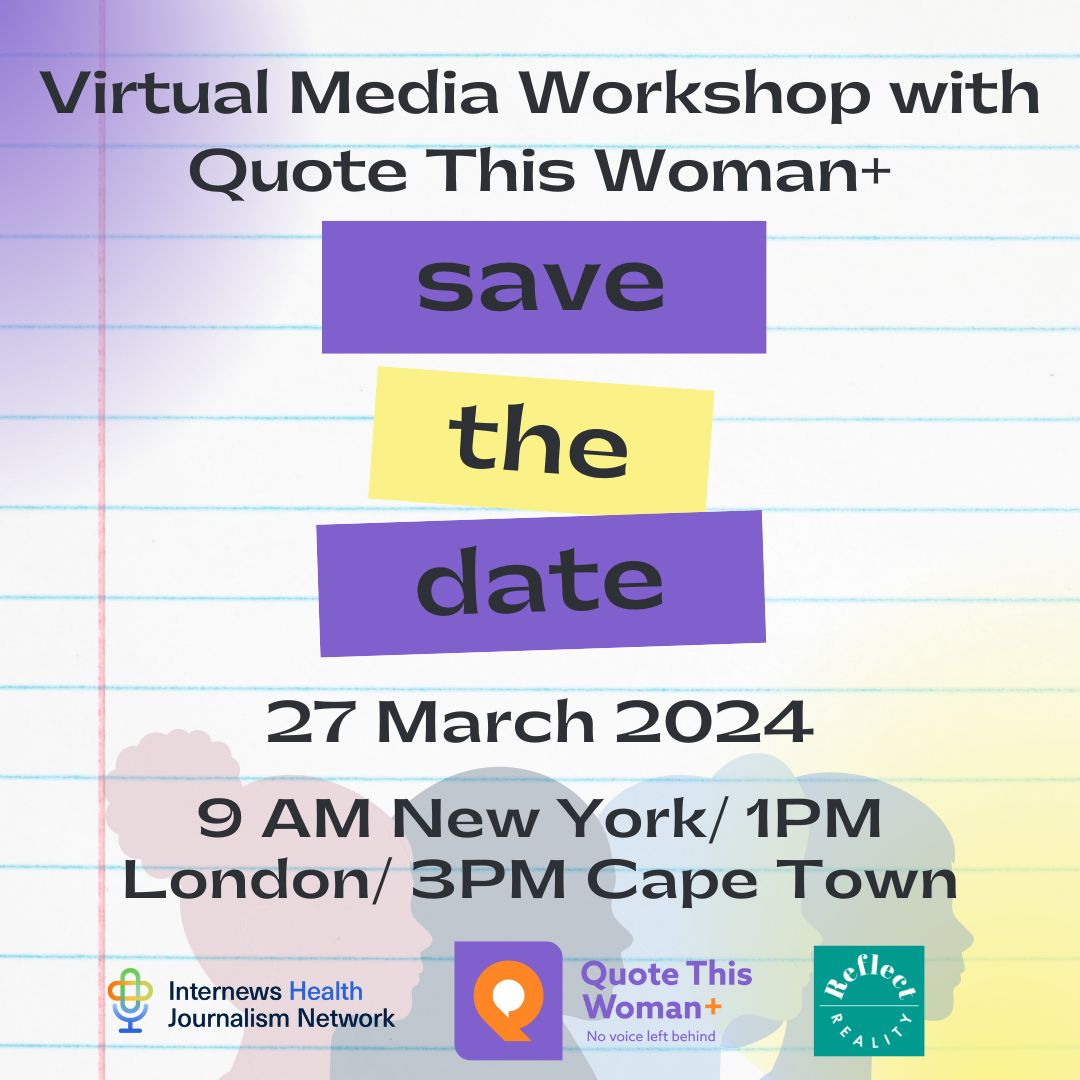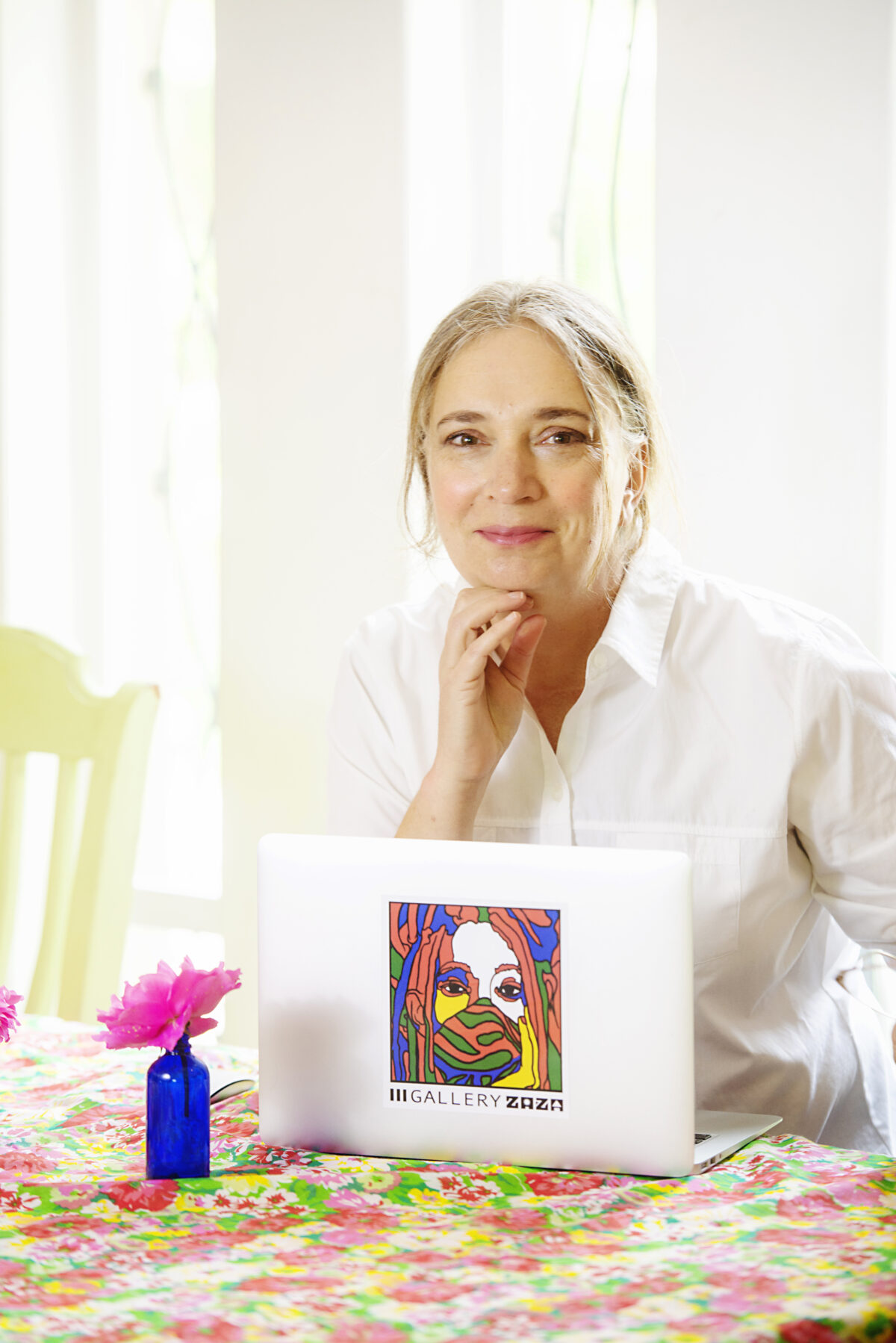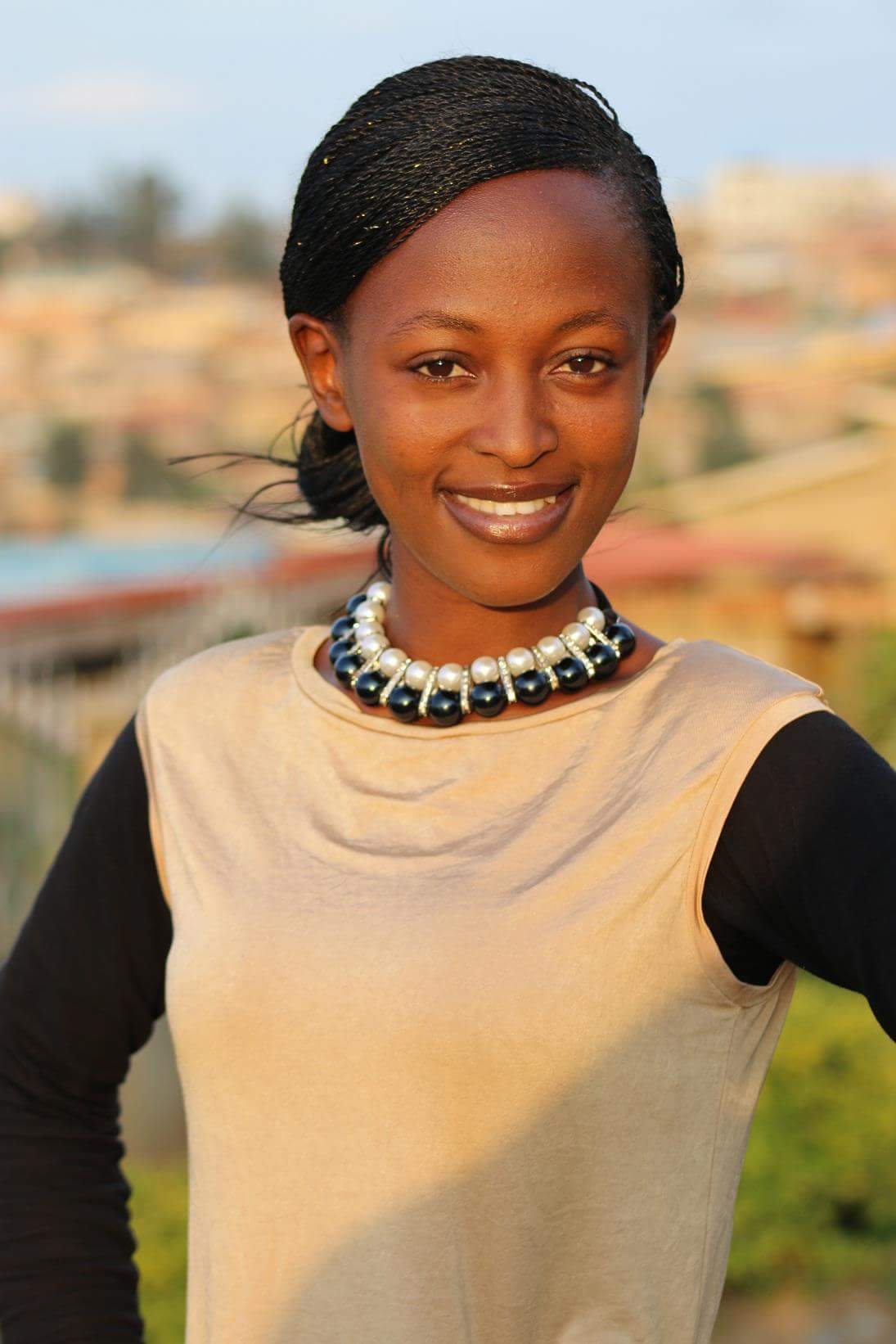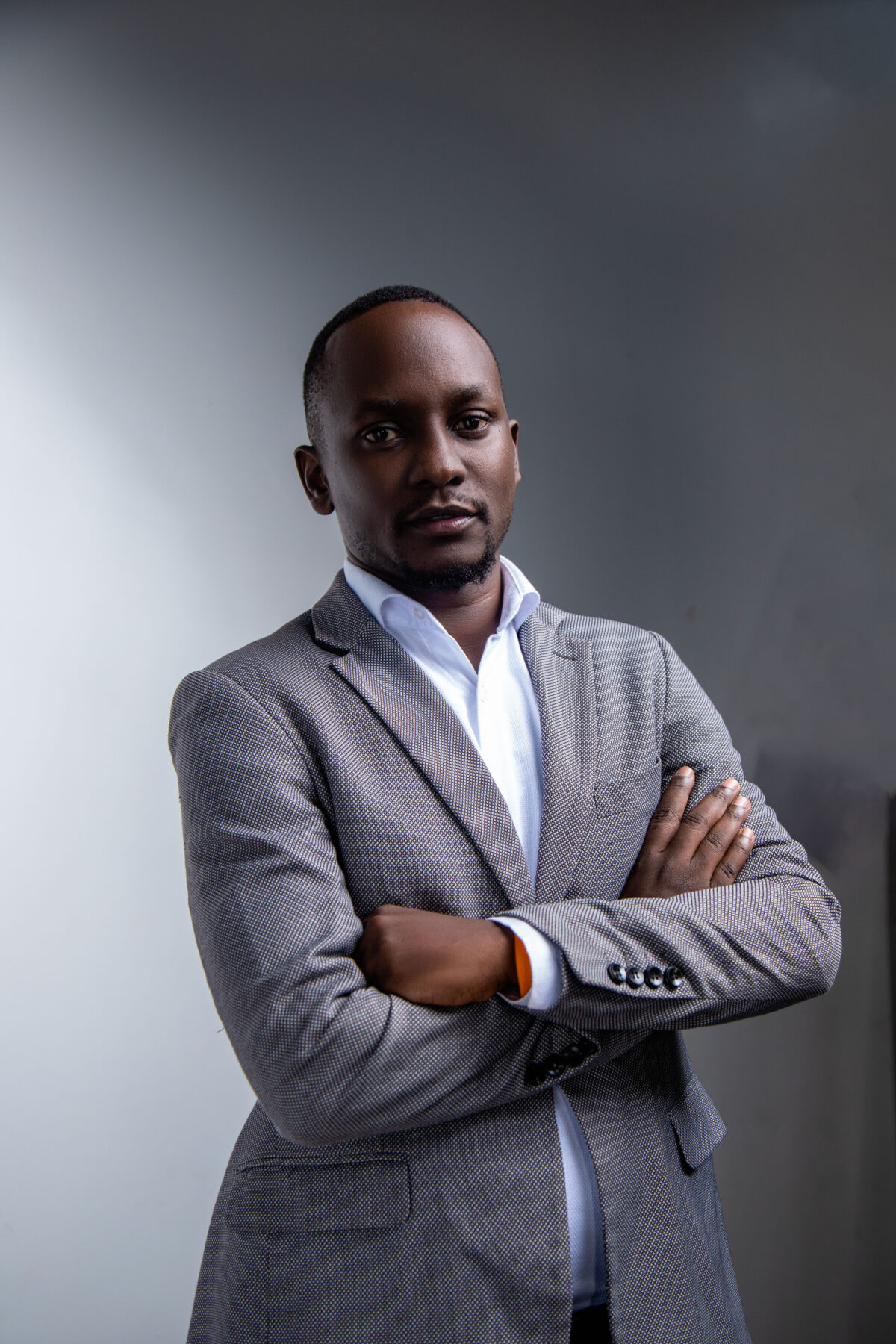Compiled by Sydney Blakeney

In honor of International Women’s Month, the Internews Health Journalism Network and Quote this Woman+ held a virtual media workshop on March 27th. Quote this Woman+ is an intersectional feminist organization creating resources to transform gender representation in the media landscape by promoting women+ voices and narratives that reflect African demographics and perspectives. Following the workshop led by Kath Magrobi, Founder & Director of Quote This Woman+, three additional guest speakers engaged in a media dialogue on the subject: Blandine Umuziranenge, Founder & CEO of Kosmotive; Paula Orlando, Gender Programming Advisor, Internews; and Abaas Mpindi, CEO of the Media Challenge Initiative.
The current state of women sources in media
Although women and girls make up half of the world’s population, they only make up 25% of what we see, read or hear about in the news. Within the news industry, women are often excluded from leadership roles, resulting in major gaps in coverage of gender inequality issues and those that affect women disproportionately, regardless of demand or audience. The 2022 Global Media Monitoring Project report found that 1% of news articles across over 100 countries sampled referred to gender inequality or issues that primarily affect women and girls. Globally, women access the news roughly 15-16% less than men, which the report From Outrage to Opportunity suggests is due to the male-centric tone of the stories they read. Additionally, a growing number of women have the perception that they are under or unfairly represented in content, leading to women being less willing to pay for news. Based on these figures, journalists have an important role in combatting these perceptions by engaging more frequently and effectively with women+ sources and reporting on stories impacting those in their community likely underrepresented in media.
What are your “blindspots” while interviewing women+ sources?
Magrobi kicked off the session by describing the common ‘blind spots’, or areas of ignorance, unconscious bias or unexamined prejudice shaped by an individual’s background, experiences or societal influences. Journalists often engage with these blindspots when interviewing women+ sources, participating in any of the following activities: confirmation bias, stereotyping, framing, binary thinking and cultural authority bias.

“Having blind spots is a part of being human, and we really need to start worrying about blindspots only when we fail to recognize them, and then in that, fail to address them,” Magrobi explains.
Mitigating these blindspots can be prevented simply by asking the question, “Is there anything I’m overlooking or that I should have asked you, or that I asked you incorrectly?” By providing the space for your interviewee to respond, you can combat your own biases and learn even more information than you were previously seeking.
To learn more about blindspots and how to address them using empathy, inclusive language, active listening and cultural competence in interviews, view the tipsheet from Quote this Woman+ below.
Building trust between journalists and women+ sources
As perceptions of the media being “unfair and unbalanced” towards women have grown, journalists are finding it increasingly difficult to incorporate women+ sources into their stories as some people refuse to be interviewed all together due to previous poor experiences with journalists. Additionally, journalists conducting interviews often fall victim to their biases and fail to take into consideration the perspectives of the women they are interviewing. Umuziranenge has been on both sides of the spectrum as a journalist and an expert, sharing how “…it can be frustrating when someone is interviewing you, but they are kind of telling you what to respond… And then by the time you are responding they say, ‘I think you should be responding like this.’”

Journalists and newsrooms must make concerted efforts to rebuild trust within their communities to encourage consistent engagement from women+ sources. “Building trust is a long process, and it’s not a one-off thing,” Paula Orlando explains. Simple practices such as sharing questions ahead of the interview, allowing interviewees to review their interview prior to publication to ensure their ideas were accurately captured, or even opening newsrooms for women sources to visit and engage with journalists over time can help women+ sources build confidence in their interviewing skills and rebuild trust in the media over time.
Journalists must also be sensitive when reporting about cultures that are dissimilar to their own. For every expert discussing the history and cultural relevance of certain practices in a region, journalists can incorporate an underrepresented source that may present conflict viewpoints to challenge the status quo and advocate for change if practices are harmful to certain communities. Newsrooms should also encourage male journalists to learn more about gender sensitive issues and be able to professionally report on them to eliminate the stigma that “women’s issues should only be reported on by women.”
How can journalists be more aware when interviewing women+ sources?

Mpindi understands that building the capacity of young journalists involves emphasizing the importance of women+ sources. “If you want to be a journalist and you want to practice good journalism, then that journalism has to reflect the whole population that you’re covering.” Mpindi encourages journalists to reflect on their own stories over the last five years to see how many women sources you have covered. He also emphasizes the importance of recognizing whether the sources are sharing personal experiences, or if there is representation of women+ experts in the community.
Resources
Many resources are available for journalists online to help them become more aware of their reporting practices. Reflect Reality is a tool hosting a variety of monitoring tools, a compilation of databases of expert sources from across the world, and methodologies for newsrooms to implement practical strategies for newsrooms to monitor their content and identify areas for improvement and discuss gender sensitivity in the newsroom. HJN members now have FREE access to the two-hour Reflect Reality e-course to learn more about how to interview women+ sources. Journalists in Africa can also sign up for the Quote This Woman+ database of activists, experts and thought leaders to ensure they reach a diverse range of sources.
***The “+” in the Quote This Woman+ name indicates that, QW+ experts are not only women, but include other voices who are marginalized due to gender, location, sexuality, race, class, geography, disability, and other factors. This includes women living with disabilities, women living rural areas; women from cultural or religious minorities, and those who identify with the LGBTQI+ community.